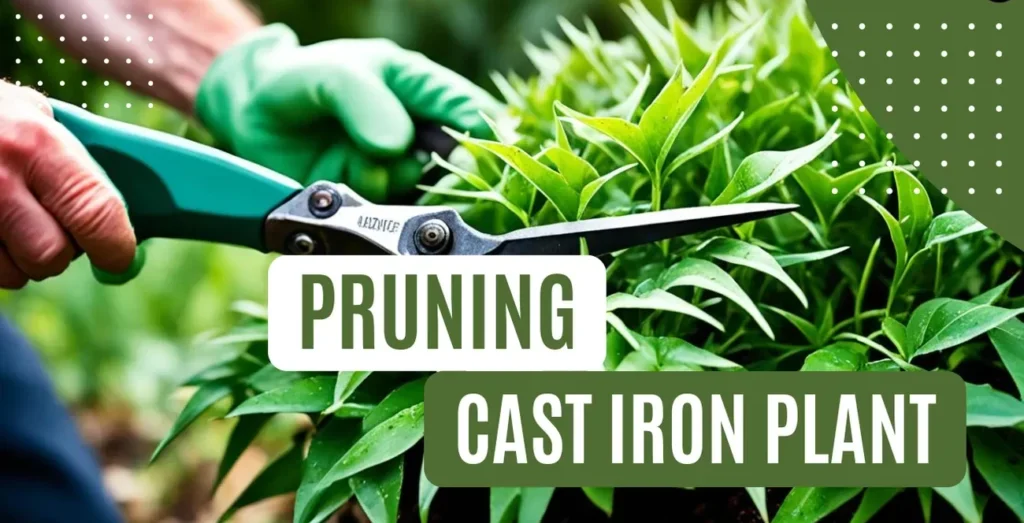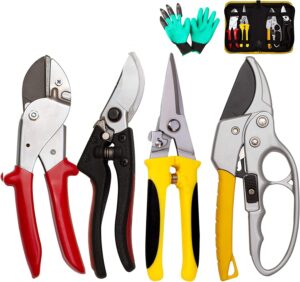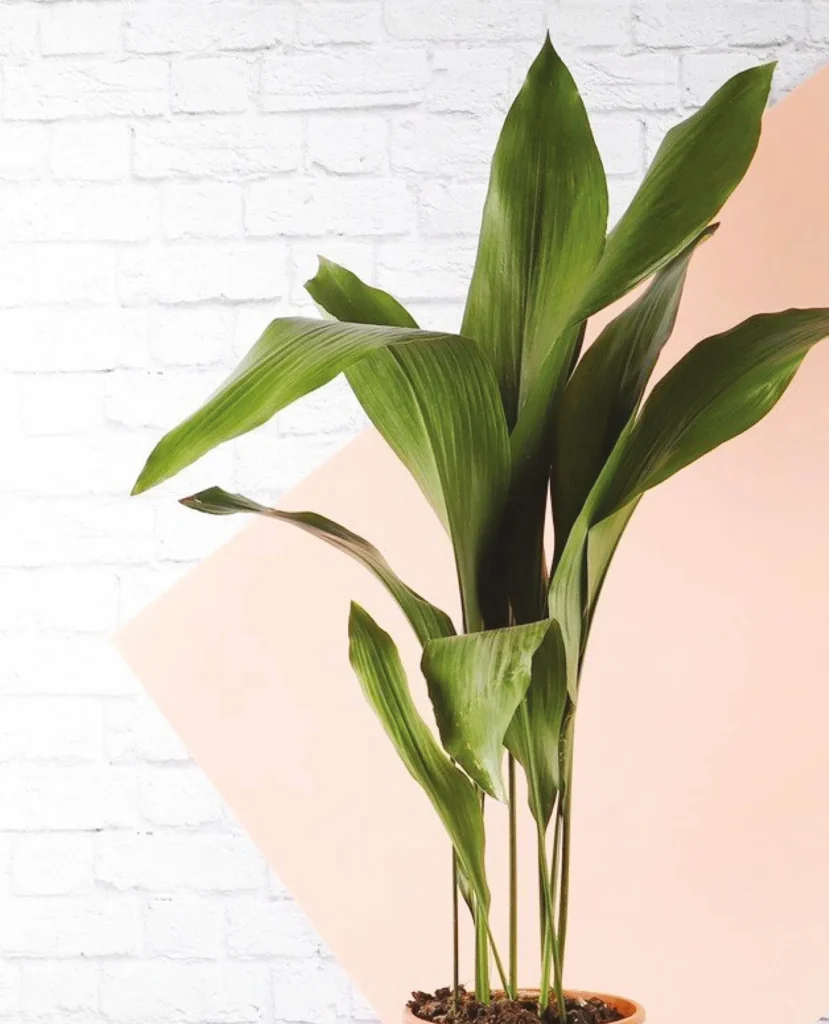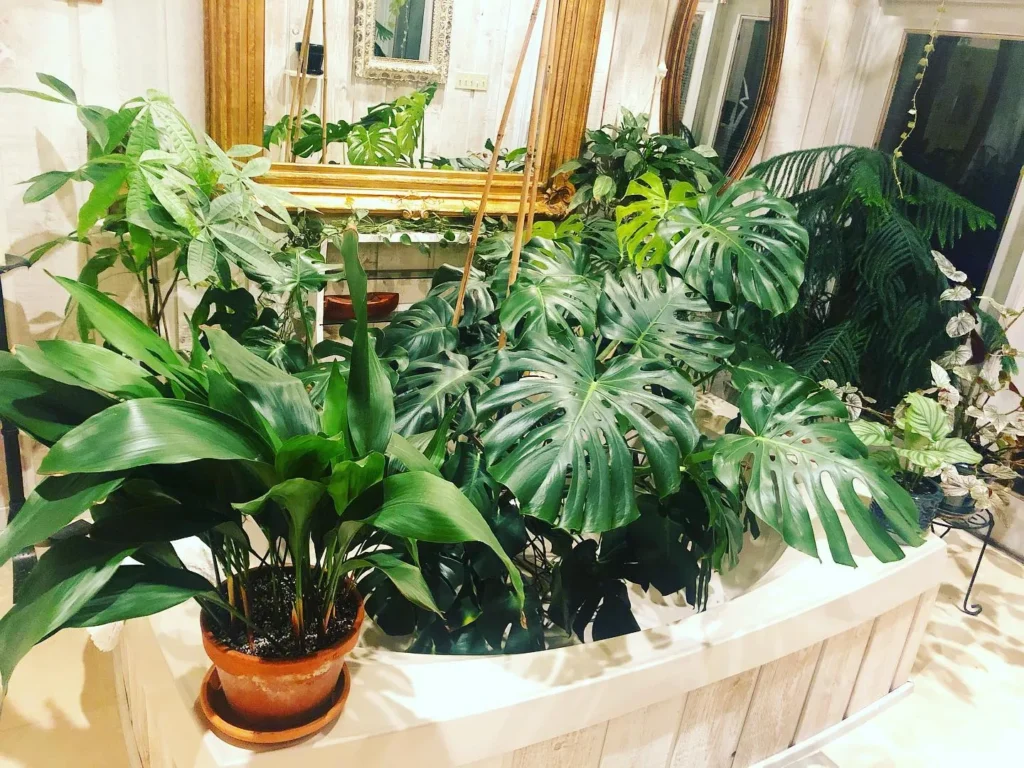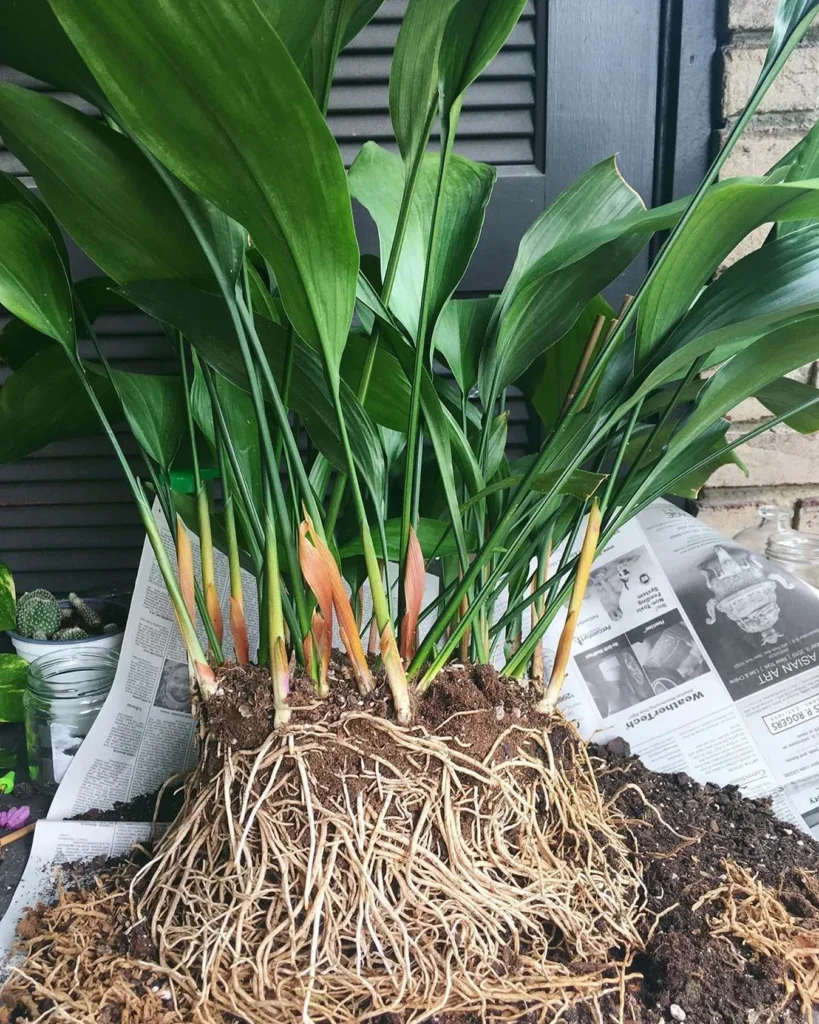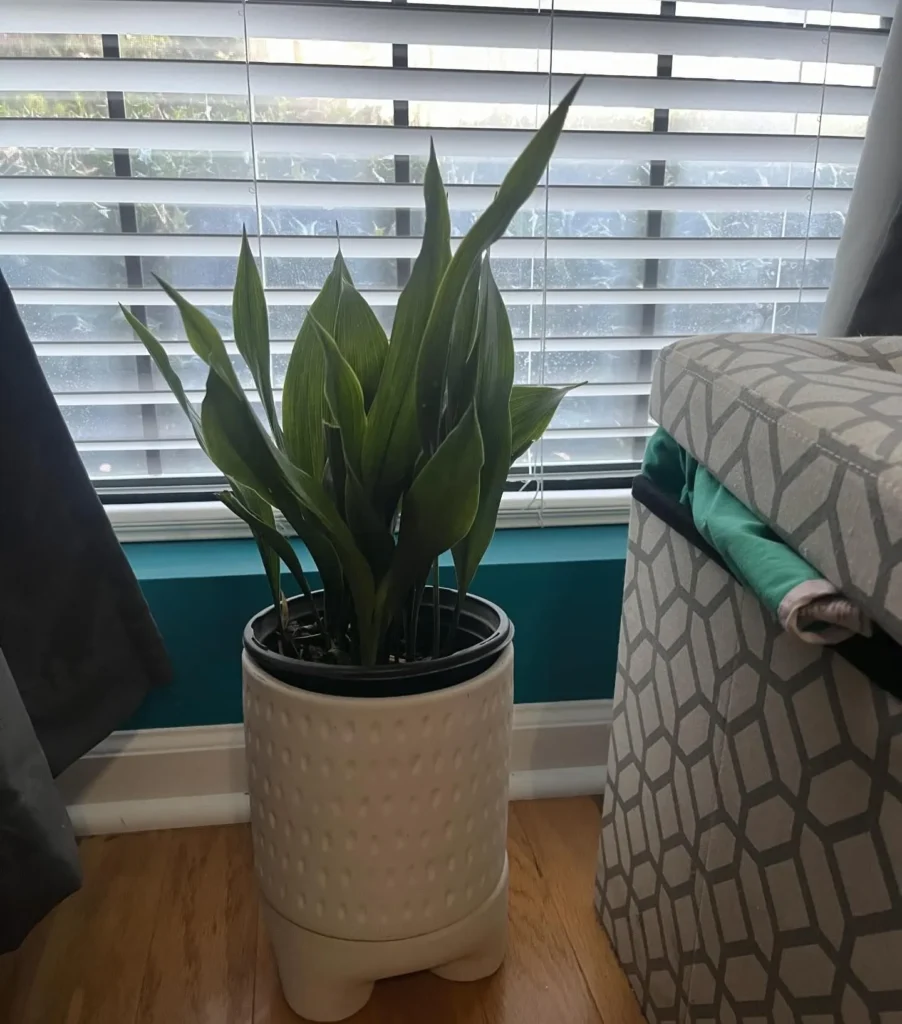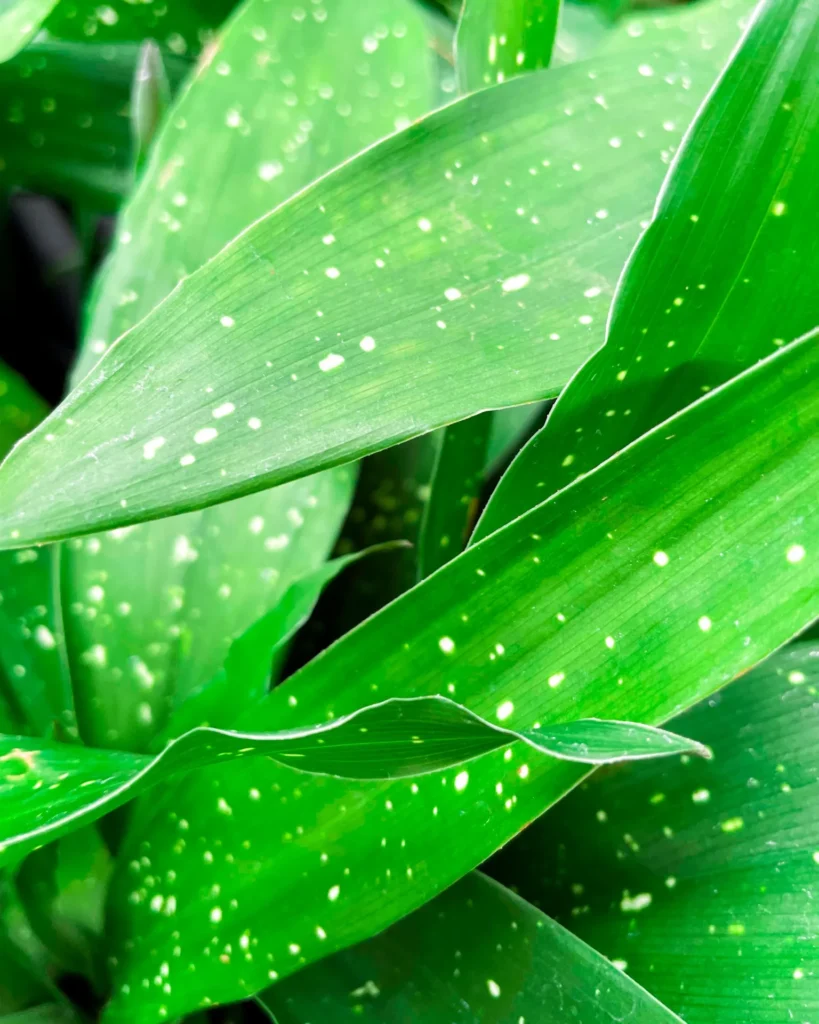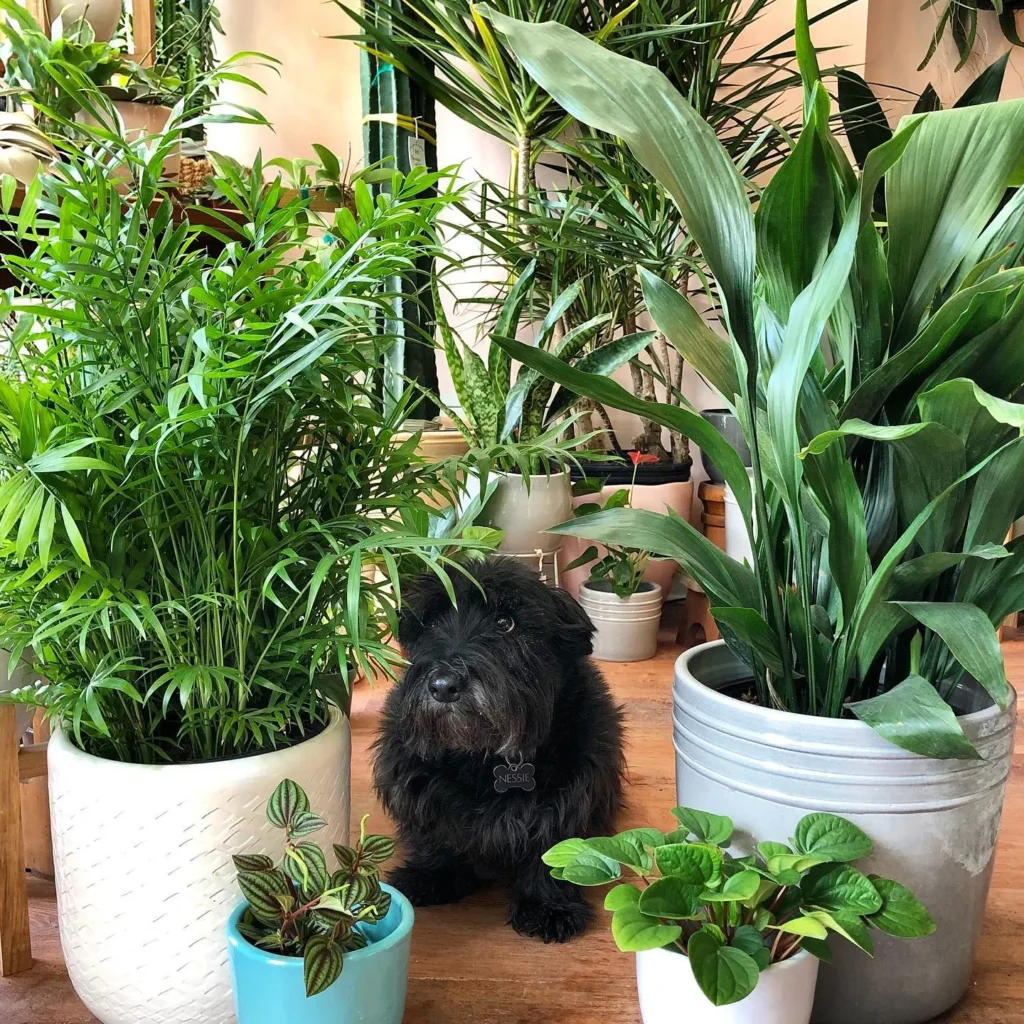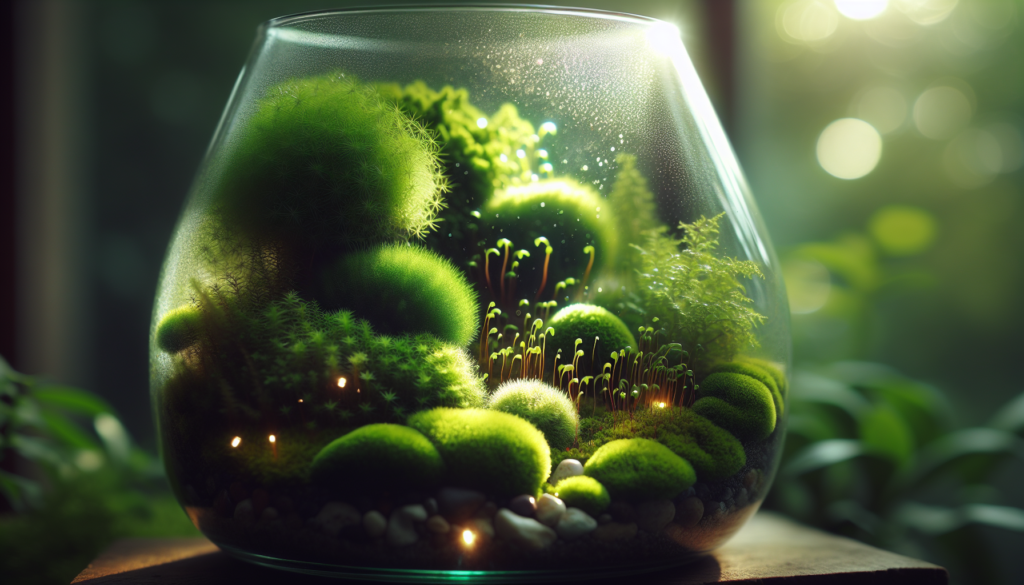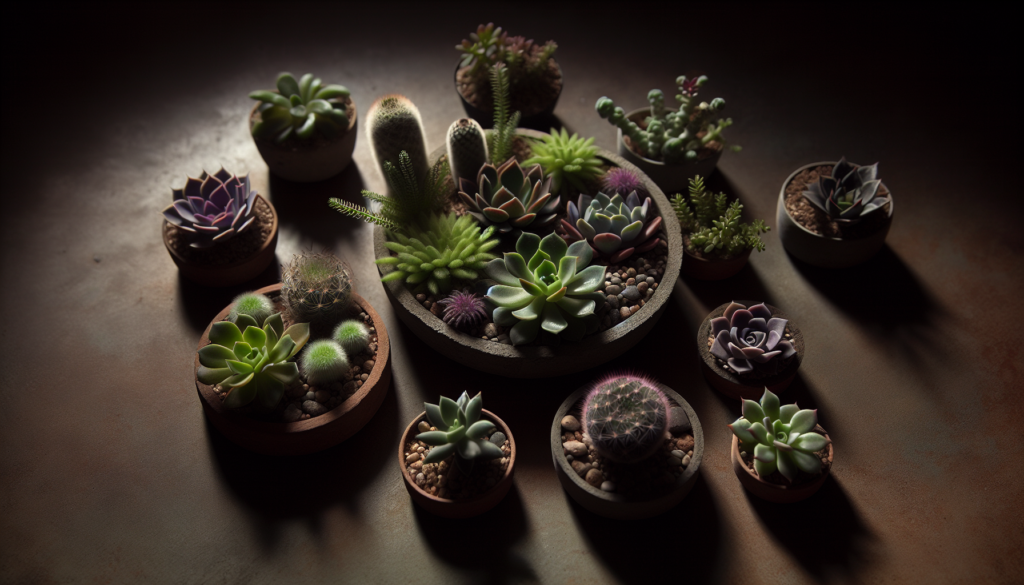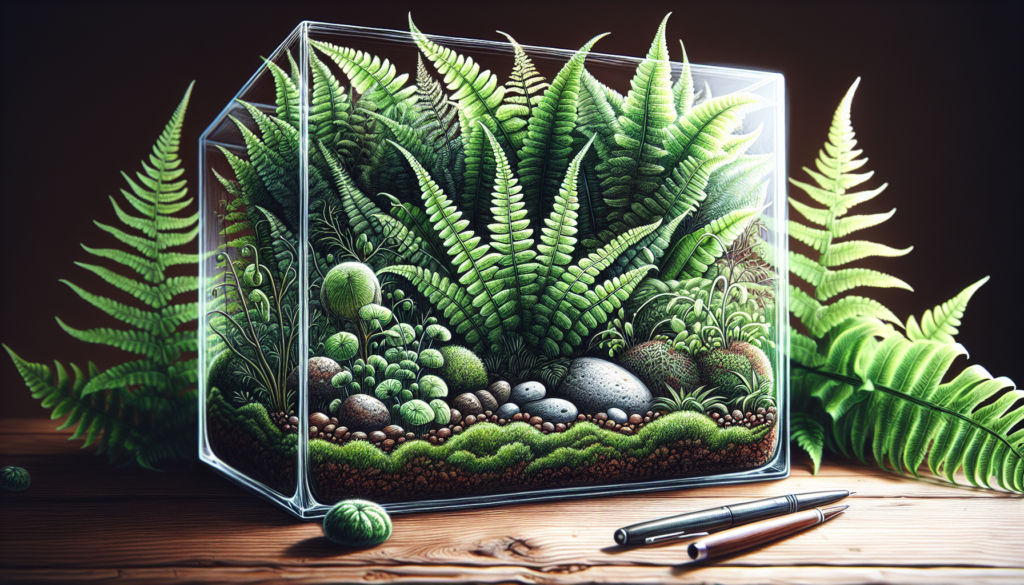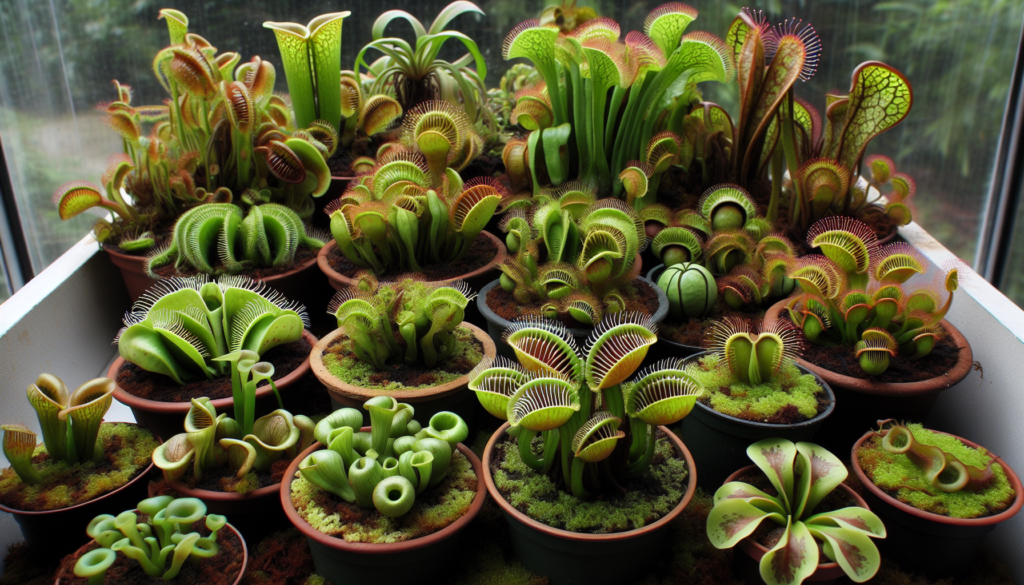Prune a cast iron plant by removing damaged or yellowing leaves at the base and cutting back any leggy stems to encourage fuller growth, ideally during its active growth phase in spring or early summer.
In this guide, I’ll share expert advice on pruning Cast Iron Plants, including selecting the right tools and techniques for cutting back dead or overgrown foliage to promote healthy growth and a well-maintained appearance. You’ll learn the essentials of plant care, from growth habits to propagation, while avoiding common pruning mistakes.
Understanding Cast Iron Plants
Before we delve into the art of pruning and trimming Cast Iron Plants, it’s important to have a solid understanding of these resilient beauties. Cast Iron Plants, scientifically known as Aspidistra elatior, are known for their sturdy foliage and impressive growth habits.
Cast Iron Plants are aptly named for their ability to thrive in challenging conditions, including low light, high humidity, and neglect. Their dark green, glossy leaves add a touch of elegance to any indoor or outdoor space, making them a popular choice for plant lovers.
The foliage of Cast Iron Plants is known for its unique beauty. The large, broad leaves have a leathery texture and are borne on long petioles, giving the plant a tropical appearance. The dark green color of the leaves adds depth and richness to any environment, creating a lush and vibrant atmosphere.
In terms of growth, Cast Iron Plants have a slow but steady pace. They are typically low-maintenance and don’t require frequent repotting or extensive care. With the right conditions, these plants can grow up to 2-3 feet tall, creating a captivating presence in any room or garden.
Why Pruning is Important for Cast Iron Plants
Pruning is an essential practice when it comes to ensuring the health and vibrancy of your Cast Iron Plants. By trimming away unwanted growth and shaping the plant, pruning promotes better foliage development and overall appearance.
There are several key reasons why pruning is crucial for Cast Iron Plants:
- Enhanced Growth: Regular pruning stimulates new growth and encourages the plant to produce more leaves, resulting in a fuller and lusher appearance.
- Promotes Air Circulation: Pruning helps create space between branches and leaves, allowing for better air circulation. This reduces the risk of fungal diseases and improves the plant’s overall health.
- Stress Reduction: Cast Iron Plants can become stressed due to overcrowding or competing for nutrients. Pruning helps alleviate this stress by removing unnecessary foliage, giving the plant more resources to thrive.
- Shape and Aesthetics: Pruning allows you to shape your Cast Iron Plants according to your desired aesthetic preference. It helps maintain a compact and tidy appearance, making them perfect for both indoor and outdoor spaces.
- Removal of Diseased or Damaged Parts: Pruning allows you to identify and remove any diseased or damaged parts of the plant promptly. This prevents the spread of infections and ensures the plant remains healthy.
Pruning Tools for Cast Iron Plants
When it comes to pruning your beloved Cast Iron Plants, having the right tools can make all the difference. In this section, I will discuss the essential pruning tools you should have on hand to ensure precision and ease during the pruning process.
Garden Pruners
A reliable pair of garden pruners is a must-have for any plant enthusiast. Look for pruners with sharp blades and a sturdy construction that can easily cut through the thick foliage of Cast Iron Plants.
These pruners will be your go-to tool for removing dead leaves and thinning out overgrown areas.
Shears
In addition to garden pruners, a good pair of shears is essential for tackling larger branches and stems. Shears provide the leverage and cutting power needed to trim back robust growth and shape your Cast Iron Plant as desired.
Opt for shears with adjustable blades to accommodate different pruning needs.
Loppers
For those hard-to-reach branches and thicker stems, loppers are the perfect tool. With long handles and sharp cutting jaws, loppers allow you to easily trim back larger sections of your Cast Iron Plant without straining your hands or arms.
Look for loppers with ergonomic grips for added comfort during extended pruning sessions.
Pruning Saw
When dealing with thicker branches that cannot be easily cut with shears or loppers, a pruning saw comes to the rescue. This specialized saw features sharp, serrated teeth that effortlessly slice through tough wood.
Choose a pruning saw with a comfortable grip and a blade that is long enough to accommodate the size of your plants.
When to Prune Cast Iron Plants
Pruning at the right time is crucial for maintaining the health and appearance of your Cast Iron Plants. In this section, I will guide you on the best time to prune these plants and provide you with insights on creating an effective pruning schedule.
Cast Iron Plants thrive when pruned during their active growing season, which is typically in the spring and summer months. Pruning during this time allows the plants to recover quickly and promotes vigorous growth.
It is important to avoid pruning during the fall and winter when the plants are dormant, as they are less likely to regenerate.
A good rule of thumb is to prune your Cast Iron Plants after the blooming season ends. This allows the plant to redirect its energy towards new growth without sacrificing its ability to produce flowers. By pruning during the right season, you can ensure that your plants remain healthy and vibrant.
When deciding on a pruning schedule for your Cast Iron Plants, consider the specific needs of your plants. Factors such as their overall condition, growth rate, and environmental conditions can influence the frequency of pruning. Regularly assess your plants to determine when pruning is necessary.
- Inspect the foliage regularly to identify any dead, damaged, or diseased leaves. These should be pruned as soon as possible to prevent further damage and encourage new growth.
- Observe the overall shape and size of the plant. If it becomes too large or starts to lose its compact appearance, pruning can help control its growth and maintain its desired form.
- Consider the weather conditions in your area. If your Cast Iron Plants experience extreme heat, cold, or high winds, pruning may be needed to reduce stress on the plant and promote its resilience.
Step-by-Step Pruning Techniques
Pruning your Cast Iron Plants requires careful attention and a systematic approach. By following these step-by-step pruning techniques, you can ensure that your plants thrive and maintain their beauty.
- Inspect your plants: Start by closely examining your Cast Iron Plants. Look for any dead, damaged, or diseased foliage and identify areas that need pruning.
- Gather the necessary tools: Before you begin pruning, gather the essential tools such as sharp pruning shears, gloves, and a clean, damp cloth.
- Prepare for pruning: To prevent the spread of diseases, sanitize your pruning shears by wiping them with a cloth soaked in rubbing alcohol or a mild bleach solution.
- Identify the target: Focus on the specific parts of the plant that need to be pruned. This may include yellowing leaves, leggy stems, or overcrowded areas.
- Make the cuts: Use sharp pruning shears to make precise cuts just above a leaf node or a healthy bud. This promotes new growth and prevents unsightly stubs.
- Remove dead or diseased foliage: Trim away any dead or diseased leaves and stems. Be sure to discard them properly to prevent the spread of pests or diseases.
- Thin out overcrowded areas: If your Cast Iron Plant has dense foliage, selectively trim away excess stems to promote better air circulation and light penetration.
- Shape your plant: Prune for aesthetic purposes by shaping your Cast Iron Plant. Trim the outermost stems to maintain a neat and balanced appearance.
- Clean up: Once you have finished pruning, clean up any debris and dispose of it properly. This helps maintain a tidy and healthy gardening space.
Trimming Techniques for Cast Iron Plants
Trimming is an essential part of maintaining the shape and appearance of your Cast Iron Plant. By employing expert trimming techniques, you can achieve a neat and well-groomed plant that enhances the beauty of your indoor or outdoor space.
When it comes to trimming your Cast Iron Plant, it’s important to consider a few key techniques that will ensure optimal results. Here are some tried and tested trimming techniques that I recommend:
- Removing Dead or Yellowed Leaves: Start by identifying any dead or yellowed leaves on your Cast Iron Plant. Using a clean pair of gardening shears, carefully snip away these leaves at the base, ensuring not to damage the healthy foliage.
- Shaping the Plant: To maintain a desired shape for your Cast Iron Plant, you can trim the outermost leaves that are extending beyond the desired size. This will help keep the plant compact and well-proportioned.
- Controlling Overgrowth: If you notice that your Cast Iron Plant is growing too large or becoming overcrowded, you can trim back some of the taller or crowded stems. This will allow better airflow and light penetration, promoting healthy growth.
- Pinching Tips: Pinching the tips of the stems can encourage branching and create a bushier appearance for your Cast Iron Plant. Simply use your thumb and forefinger to pinch off the top portion of the stem.
- Regular Maintenance Trims: To keep your Cast Iron Plant looking its best, it’s beneficial to perform regular maintenance trims. This involves removing any damaged or discolored leaves as well as maintaining the desired shape of the plant.
Common Mistakes to Avoid When Pruning Cast Iron Plants
While pruning can greatly benefit your Cast Iron Plants, it’s important to be aware of common mistakes that can harm rather than help your plant.
In this section, I will discuss the mistakes you should avoid during the pruning process and provide you with tips on how to correct them.
- Over-pruning: One common mistake is pruning your Cast Iron Plant too aggressively. While it’s important to remove dead or damaged foliage, excessive pruning can shock the plant and hinder its growth. Avoid removing more than 20% of the plant’s foliage at a time.
- Using dull or inappropriate tools: Using dull pruning tools or tools that are not suitable for the job can result in rough and uneven cuts, which can damage the plant. Make sure to use sharp and clean pruning shears or scissors specifically designed for pruning Cast Iron Plants.
- Pruning at the wrong time: Pruning at the wrong time can disrupt the plant’s natural growth cycle and inhibit its ability to recover. Avoid pruning during the winter months when the plant is dormant. The best time to prune Cast Iron Plants is during the spring when they are actively growing.
- Pruning without sterilizing: Pruning tools can carry disease-causing pathogens that can spread to the plant if not properly sterilized. Before and after each pruning session, disinfect your tools by wiping them with a clean cloth soaked in rubbing alcohol.
- Removing healthy foliage: Overzealous pruning may lead to the unnecessary removal of healthy foliage. Avoid cutting off green and functioning leaves as they play an essential role in the plant’s photosynthesis and overall health.
Pruning for Common Cast Iron Plant Issues
Cast Iron Plants, like any other plant, can encounter various issues that affect their health and growth. Fortunately, specific pruning techniques can help address these problems and restore the vitality of your Cast Iron Plants.
In this section, I will guide you on how to prune your plants to resolve common issues such as yellowing leaves, overcrowded growth, and pest infestations.
Yellowing Leaves
If you notice yellowing leaves on your Cast Iron Plant, it may indicate nutrient deficiencies or overwatering. Start by trimming off the affected yellow leaves using sharp pruning shears. Make sure to cut the leaves close to the base, avoiding any damage to the healthy foliage.
Additionally, adjust your watering schedule and ensure the plant receives adequate light to promote healthy green growth.
Overcrowded Growth
Over time, Cast Iron Plants can become overcrowded, leading to poor airflow and decreased growth. To address this issue, selectively prune the crowded stems and foliage.
Identify the densest areas and carefully trim back the excess growth, creating space for the remaining foliage to thrive. This will improve airflow, reduce the risk of diseases, and rejuvenate your plant’s appearance.
Pest Infestations
Pests like aphids, mealybugs, and spider mites can infest Cast Iron Plants, causing damage to the leaves and overall plant health. Pruning is an effective method to control and prevent pest infestations.
Inspect your plant regularly and remove any infested leaves or stems by pruning them off. Place the pruned parts directly into a sealed bag to prevent the pests from spreading. After pruning, consider using appropriate organic pest control methods to protect your Cast Iron Plants.
Maintaining Pruned Cast Iron Plants
After successfully pruning your Cast Iron Plants, it’s important to provide them with proper maintenance to ensure their long-term health and vigor. Taking care of your plants post-pruning will help them thrive and continue to beautify your space.
Here are some essential post-pruning care tips for your Cast Iron Plants:
- Watering: Water your Cast Iron Plants regularly, keeping the soil consistently moist but not overly saturated. Watering deeply and allowing the soil to dry slightly between watering sessions is ideal.
- Fertilizing: Feed your Cast Iron Plants with a balanced liquid fertilizer every four to six weeks during the growing season. This will provide them with the nutrients they need to maintain healthy foliage and promote growth.
- Lighting: Place your pruned Cast Iron Plants in a location where they receive bright indirect light. These plants tolerate low light conditions, but they thrive when exposed to medium to bright indirect light.
- Temperature and Humidity: Cast Iron Plants prefer temperatures between 60°F and 75°F (15°C and 24°C) and high humidity levels. Keep them away from drafts and maintain a humid environment by grouping them together or using a humidifier.
- Cleaning: Regularly clean the leaves of your Cast Iron Plants using a damp cloth or sponge. This will help remove dust and keep the foliage looking fresh and glossy.
- Monitoring: Keep an eye out for any signs of pests or diseases. If you notice any issues, take prompt action to alleviate the problem and ensure it doesn’t spread to other plants.
Propagation Methods for Cast Iron Plants
If you’re looking to expand your collection of Cast Iron Plants, propagation is an excellent way to do so. By using various propagation methods, you can create new plants and enjoy their lush foliage throughout your home or garden.
1. Division:
One of the most common propagation methods for Cast Iron Plants is division. To perform division, carefully remove the plant from its container and separate the root clump into smaller sections.
Make sure each section has a healthy root system and several leaves. Plant the divided sections in separate pots or directly in the ground and provide them with proper care to promote new growth.
2. Stem Cutting:
Another effective propagation method for Cast Iron Plants involves taking stem cuttings. Select a healthy stem and make a clean cut just below a leaf node. Remove the lower leaves from the cutting and dip the cut end in rooting hormone powder.
Plant the cutting in a well-draining potting mix and ensure it receives indirect light and consistent moisture. With time, the cutting will develop roots and begin to grow.
Final Tips for Successful Cast Iron Plant Pruning
As we conclude our journey through Cast Iron Plant pruning, I want to share some final tips and tricks to ensure your pruning efforts are successful. These tips will help you maintain healthy and vibrant Cast Iron Plants, adding beauty to your indoor or outdoor spaces for years to come.
Tip 1: Regularly inspect your Cast Iron Plants for any signs of damage, disease, or pest infestation. This proactive approach will allow you to address any issues promptly, preventing further damage and ensuring the overall health of your plants.
Tip 2: When pruning, always use clean and sharp pruning tools. This will ensure clean cuts, minimize the risk of infection, and promote quick healing. Remember to sanitize your tools before and after use to prevent the spread of diseases.
Tip 3: During pruning, focus on removing any dead, damaged, or diseased foliage. Additionally, consider thinning out overcrowded areas to improve air circulation and maintain an aesthetically pleasing shape. Avoid excessive pruning, as this can stress the plant and inhibit its growth.
By following these final tips, you will be well-equipped to successfully prune your Cast Iron Plants. Remember to approach pruning with care and patience, allowing the plant to thrive and rejuvenate. Happy pruning!
If you notice black marks on the leaves of your Monstera, it may be a result of leaf burn from direct sunlight. Move your plant to a location with bright, indirect light and avoid exposing it to prolonged periods of direct sunlight.

